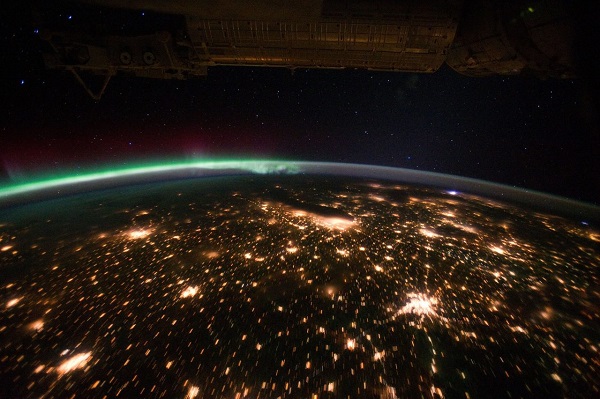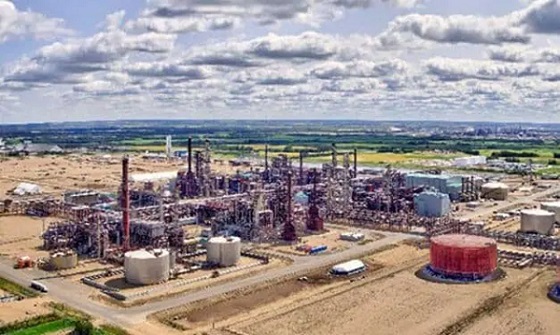Energy
Energy wise, how do you even describe 2024?

From the Frontier Centre for Public Policy
By Terry Etam
There still remains a full court press in North America/western Europe among certain socioeconomic classes to “just stop oil” and the like. While we as an industry in many ways remain in our foxholes, and the opponents of hydrocarbons roam freely, looking to criminalize if at all possible any positive dialogue about the value of hydrocarbons.
Huh. Look at that. It’s been ten years since I started writing about energy. Not that that particular trivia interests anyone, why would it, however it is interesting to look back at the impetus for writing and how that has changed.
Ten years ago, as I worked in a communications department for an energy infrastructure business that did not like publicity of any kind whatsoever, it began to dawn on me how dangerous were the habits that formed thereof, and how far reaching the consequences. As but one example, anti-pipeline activists were all over Washington DC like ants on a mound, pressuring the government to kill the Keystone XL pipeline. They swarmed social media and a motivated army spread the gospel like wildfire, truth be damned.
The pipeline industry looked at the energy ignoramuses and kind of just sniggered, for they knew they were right – pipelines were and are the safest and most reliable form of liquid/gas transportation, forming a global industrial backbone we can’t even imagine living without – and there seemed a largely prevailing attitude in industry that these pipeline facts were so glaringly obvious that everyone would figure it out. I still hear the chortling: “Look at those lunatics, protesting pipelines without knowing they’re standing on one that’s been there for 40 years.”
Yeah, well, the lunatics did pretty well didn’t they… Keystone XL is a distant memory, the US Mountain Valley Pipeline is years late and twice over budget, and even TMX is only now limping into service at what, about 700 times over budget and equally late… I shudder to think what kind of back room deals were cut with extremists who promised TMX would never be built and yet now stand silent. If we had a conservative prime minister at the helm now trying to complete TMX, I would bet my ears that the going wouldn’t be as protest-lite as it is now.
Ten years ago, the impetus was to fill a void in public energy knowledge because there wasn’t much of an effective voice that was doing so. If there was, there was scant evidence of any success. So that was kind of fun, going for the low hanging fruit of explaining energy nuances to a public that cared about nothing except utility bills and what it cost to fill up the family beast.
But that excitement faded as the energy industry’s inability to articulate its value was overwhelmed by the likes of Greta Thunberg, a Swedish teen that was hoisted onto the shoulders of cagey mobs, and thrust into the public consciousness as some sort of Jesus-like figure. At that point, the battlefield was completely overrun, and the oil/gas industry seemed to head underground and wait for the storm to pass. What a mistake.
There still remains a full court press in North America/western Europe among certain socioeconomic classes to “just stop oil” and the like. While we as an industry in many ways remain in our foxholes, and the opponents of hydrocarbons roam freely, looking to criminalize if at all possible any positive dialogue about the value of hydrocarbons. But. The anti-fossil fuel people are so busy working on Orwellian regulations/policies/roadmaps that they haven’t looked over their shoulders at the storm clouds brewing, the ones that hydrocarbon producers always knew would arrive.
As seven out of eight billion people on earth strive to live like the west does, the inevitable is happening: global demand for energy, in all forms, is soaring, and absolutely no one wants to take a step backwards in terms of standard of living. The world wants to add a billion air conditioners, because those things are life-transforming (see: any modern glass-cube high rise residential/commercial building, modern hospitals/seniors centers, etc), and the comfy west wants to add an estimated $250 billion per year in data centers because we can and it looks fun.
We haven’t even begun to figure out how to rewire the world for an energy transition even if we used energy consumption from 20 years ago as the starting point; today, we can’t keep up using all our resources. Every year, we set new records for solar installations, wind installations, coal consumption, oil consumption… and new natural gas infrastructure is being built around the world backed by multi-decade contracts. The fight over nuclear continues in the oddly ridiculous way it now goes, with countries within the same jurisdiction (EU, for example) shutting down nuclear facilities (Germany) on safety or environmental (?) grounds while countries right beside them add new ones. In the US, the same craziness is happening within the country; places like New York shuttering nuclear facilities while other parts of the country develop new ones.
What makes energy commentary challenging these days is that we’ve become desensitized to such insanity, we are pickled in it, and treat it as just the regular public discourse. I mean really. Look at Germany’s self inflicted damage in shutting down its nuclear plants on the grounds of safety. How much safer are Germans if Belgium builds new ones next door?
We’ve become used to the blaring theme “electrify everything” when we can clearly see, if we choose to look, that electrifying anything at all is becoming more challenging, with grid operators all over the place issuing warnings about potential energy shortages/rolling blackouts or brownouts/falling grid reliability.
AI is coming. Like a freight train. No one is prepared for it. Anyone paying attention is sounding the alarm bells: Power consumption is going to go through the roof. And that is in addition to a world that continues to set new energy usage records relentlessly, a trend that seems unstoppable and huge even before AI.
The storm clouds are there, they are growing, and no one wants to look up.
And then we need to set this insanity against a truly mind-boggling global geopolitical framework that looks like something out of Monty Python.
China is an amazing object, like a parallax, that looks completely different depending on your vantage point. By that I mean: energy transition advocates, the ones that ‘just know’ that net-zero 2050 is inevitable and simply requires more ‘policy’, point to China as a green hero, installing more solar than any other country, at breakneck pace. At the same time, the opposite camp that ‘just knows’ that net-zero 2050 has no chance due to the sheer challenge point out that China is constructing new coal-fired power plants at a rate of two per week.
Both are right. So are the people that rejoice at how solar panels have become so much cheaper due to China’s manufacturing prowess, as are the people that point out the staggering environmental footprint of building all that stuff behind a somewhat opaque curtain.
The people that herald the rise of China’s EV adoption are right, but so are the people that fear China’s control of most of the critical mineral/metal supply/processing chain.
India is a rising behemoth. The EU still thinks it runs the world. The US’ leadership is a gym full of blindfolded shouting people running at full speed. Canada thinks it is the world’s conscience, to the extent it is still thinking at all, building foreign and local policy on the notion that Canadians are the global good guys, a selfless hero running around the globe’s stages eagerly saying politically correct things while back home the wheels are coming off. Watch us impale our economy on a stick just to show the world that no one can possibly be morally superior. Russia is a vodka-soaked-yet-clever power monger with some thousand-year-old chip on its shoulder and enough bullets to fill a million Ladas. The Middle East remains the Middle East, reliably distributing both petroleum products and anger to every corner of the world…
The world’s biggest economies are so far in debt that they don’t know what to do, and we must painfully watch central bankers craft new policies and plans under the faulty pretense that they do know what they’re doing. The US is adding a trillion dollars worth of debt every hundred days, and the gurus of monetary policy are watching the economy with the wisdom and effectiveness of a time-forgotten goat-herder buying a cell phone before he’s found out what electricity is.
The future is never certain. Obviously. There will be black swans, rare events that have major global seismic repercussions. Terrorists are pretty good at destabilizing the world with a flick of the wrist, doing more damage than a tsunami, but then there are tsunamis as well. And all sorts of human hijinks that can throw a spanner in the works quite easily because we are all one step away from snapping.
There will be new wars, apparently, the peace dividend nothing but a dead deer on the side of the road. Political polarization is so severe that at any given time some substantial percent of the population believes that if their political enemy gets elected that ‘the future of the nation is at stake’. In the US two very ancient people are leading these charges, and every single American I talk to says, in a burst of frustration, “How the hell did we get here, and why are those two the only choices?”
And all of us that pay attention to energy ask the very same questions about the energy world. We watch economic powerhouses like Germany and California screw themselves into the ground with remarkable efficiency. We can see these problems arising. We listen to grid operators that warn of coming instability instead of shouting them down or tossing them out and replacing them with people that toe the line.
The energy industry is, despite all the madness, making actual strides in reducing emissions, developing new types of energy, developing carbon sequestration options, working on hydrogen programs, integrating with all sorts of green technology. It’s tough slogging, because most attempts are met with chants of “greenwash, greenwash” by people that don’t want progress, they want fossil fuels dead and gone. As their vision of a solution, they throw soup on famous paintings. The world stands in awe, like watching a naked drunk lurch across a freeway, oblivious to his surroundings.
One good thing about the world of energy though, compared to the utter lunacy of the global political/geopolitical/sociological mess, is that we can see fairly clearly where energy is going. The crazed experiments, the building of castles to the sky, will slow to a pace that makes sense and is digestible. Global demand for oil, natural gas, and it looks like even coal will stay strong for several decades at least. Nuclear power will have a renaissance, and new technologies or battery breakthroughs will enter the scene at a rate that the world can handle. It won’t be pretty or linear or without strife, but that’s how it will be. People won’t live without cheap reliable energy.
So if you’re in the energy business, take heart – in the world of political theatre, reality is whatever you can get away with convincing the world that it is. In the world of energy, fuel is fuel, availability is availability, and we can at least count on the fact that despite all the handwringing and grandiose policy that reality can’t be evaded. It might be small comfort but at least it’s real.
Terry Etam is a columnist with the BOE Report, a leading energy industry newsletter based in Calgary. He is the author of The End of Fossil Fuel Insanity. You can watch his Policy on the Frontier session from May 5, 2022 here.
Business
Canada’s climate agenda hit business hard but barely cut emissions

This article supplied by Troy Media.
 By Gwyn Morgan
By Gwyn Morgan
Canada is paying a steep economic price for climate policies that have delivered little real environmental progress
In 2015, the newly elected Trudeau government signed the Paris Agreement. The following year saw the imposition of the Pan-Canadian Framework on Clean Growth and Climate Change, which included more than 50 measures aimed at “reducing carbon emissions and fostering clean technology solutions.” Key among them was economy-wide carbon “pricing,” Liberal-speak for taxes.
Other measures followed, culminating last December in the 2030 Emissions Reduction Plan, targeting emissions of 40 per cent below 2005 levels by 2030 and net-zero emissions by 2050. It included $9.1 billion for retrofitting structures, subsidizing zero-emission vehicles, building charging stations and subsidizing solar panels and windmills. It also mandated the phaseout of coal-fired power generation and proposed stringent emission standards for vehicles and buildings.
Other “green initiatives” included the “on-farm climate action fund,” a nationwide reforestation initiative to plant two billion trees, the “Green and Inclusive Community Buildings Program” to promote net-zero standards in new construction, and a “Green Municipal Fund” to support municipal decarbonization. That’s a staggering list of nation-impoverishing subsidies, taxes and restrictions.
Those climate measures come at a real cost to the industry that drives the nation’s economy.
The Trudeau government cancelled the Northern Gateway oil pipeline to the northwest coast, which had been approved by the Harper government, costing sponsors hundreds of millions of dollars in preconstruction expenditures. The political and regulatory morass the Liberals created eventually led to the cancellation of all but one of the 12 LNG export proposals.
Have all those taxes and regulatory measures reduced Canada’s fossil-fuel consumption? No. As Bjorn Lomborg has reported, between the election of the Trudeau government in 2015 through 2023, fossil fuels’ share of Canada’s energy supply increased from 75 to 77 per cent.
That dismal result wasn’t for lack of trying. The Fraser Institute has found that Ottawa and the four biggest provinces have either spent or forgone a mind-numbing $158 billion to create just 68,000 “clean” jobs, increasing the “green economy” by a minuscule 0.3 percentage points to 3.6 per cent of GDP at an eye-watering cost of more than $2.3 million per job.
That’s Canada’s emissions reduction debacle. What’s the global picture? A decade after Paris, 80 per cent of the world’s energy still comes from fossil fuels. World energy demand is up 150 per cent. Canada, which produces roughly 1.5 per cent of global emissions, cannot influence that trajectory. And, as Lomborg writes: “achieving net zero emissions by 2050 would require the removal of the equivalent of the combined emissions of China and the United States in each of the next five years. This puts us in the realm of science fiction.”
Does this mean our planet will become unlivable? A U.S. Department of Energy report issued in July is grounds for optimism. It finds that “claims of increased frequency or intensity of hurricanes, tornadoes, floods and droughts are not supported by U.S. historical data.” And it goes on: “CO2-induced warming appears to be less damaging economically than commonly believed and aggressive mitigation policies could be more detrimental than beneficial.”
U.S. Secretary of Energy Chris Wright responded to the report by saying: “Climate change is real … but it is not the greatest threat facing humanity … (I)mproving the human condition depends on access to reliable, affordable energy.”
That leaves no doubt as to where our largest trading partner stands on carbon emissions. But don’t expect Prime Minister Mark Carney, who helped launch the Glasgow Financial Alliance for Net Zero (GFANZ) at COP 26 in that city in 2021 and co-chaired it until this January, to soften his stand on carbon taxes. His just-released budget imposes carbon tax increases of $80 to $170 per ton by 2030 on our already struggling industries.
Doing so increases Canadian businesses’ competitive disadvantage with our most important trading partner while doing essentially nothing to help the environment.
Gwyn Morgan is a retired business leader who has been a director of five global corporations.
Troy Media empowers Canadian community news outlets by providing independent, insightful analysis and commentary. Our mission is to support local media in helping Canadians stay informed and engaged by delivering reliable content that strengthens community connections and deepens understanding across the country.
Energy
Canada following Europe’s stumble by ignoring energy reality

Family in Spain eating by candlelight during a blackout, April 2025
From Resource Works
Canada’s own 2024 grid scare proves we’re on the same path unless we change course.
Europe’s green-energy unraveling is no longer a distant cautionary tale. It’s a mirror — and Canada is already seeing the first cracks.
A new Wall Street Journal investigation lays out the European story in stark detail: a continent that slashed emissions faster than anyone else, only to discover that doing so by tearing down firm power before its replacement existed comes with brutal consequences — collapsing industry, sky-high electricity prices, political fragmentation, and a public increasingly unwilling to subsidize wishful thinking.
The tragedy isn’t that Europe tried to decarbonize quickly.
The tragedy is how they did it: by insisting on an “or” transition — renewables or fossil fuels — instead of what every energy-literate nation outside Europe pursued: renewables and fossil fuels, working together while the system evolves.
And here’s the uncomfortable truth:
Canada has already had its first European-style crisis. It happened in January 2024.
Canada’s early warning: the January 2024 electricity crunch
Most people have already forgotten it, because our political class desperately wanted you to. But in January 2024, Western Canada came within a whisker of a full-blown energy security breakdown. Alberta, Saskatchewan, and B.C. were stretched to their limit. The grid was under cascading stress. Contingency plans were activated. Alberta came terrifyingly close to rolling blackouts.
It wasn’t caused by climate change. It wasn’t caused by a mysterious cyberattack.
It was caused by the same structural brittleness now crippling Europe:
- Insufficient firm power, after years of political messaging that we could “electrify everything” without adding real generating capacity.
- Overreliance on intermittent sources not backed by storage or gas.
- A planning system that punted risk into the future, betting the grid could be stretched indefinitely.
The January 2024 event was not a blip. It was a preview.
Our European moment in miniature.
But instead of treating it as the national wake-up call it should have been, B.C. did something telling — and deeply damaging.
The B.C. government’s response: attack the messenger
Just a couple of years ago, an economist publicly warned about the economic price of emerging system vulnerabilities due to a groaning stack of “clean economy” policies.
The B.C. government didn’t respond with data, evidence, or even curiosity. Instead, a cabinet minister used the safety of legislative privilege — that gold-plated shield against accountability — to launch nasty personal attacks on the economist who raised the concerns, which themselves had originated in the government’s own analysis.
No engagement.
No counter-analysis.
No willingness to consider the system risks.
Just slurs — the very definition of anti-intellectual governance.
It was a moment that told the whole story:
Too many policymakers in this province believe that energy systems obey politics, not physics.
Physics always gets the last word.
Europe shows us what political denial turns into
The WSJ reporting couldn’t be clearer about the consequences of that denial:
- Germany: highest domestic electricity prices in the developed world.
- U.K.: highest industrial electricity rates among major economies.
- Industrial flight: chemical plants closing, data centres frozen, major players hinting at exiting Europe entirely.
- Grid instability: wind farms paid tens of millions not to generate because the grid can’t handle it.
- Public revolt: rising support for parties rejecting the entire green-transition agenda.
- Policy whiplash: governments rushing to build gas plants they swore they’d never need.
Europe is now an object lesson in how good intentions, executed poorly, can produce the exact opposite of what was promised: higher prices, higher volatility, declining competitiveness, and a public ready to abandon climate policy altogether.
This is precisely what January 2024 warned us about — but on a continental scale.
The system cost we keep pretending doesn’t exist
Every serious energy expert knows the truth Europe is now living: intermittent renewables require massive amounts of redundant capacity, storage, and backup generation. That’s why the U.K. now needs 120 gigawatts of capacity to serve a demand previously met with 60–70 gigawatts, even though electricity use hasn’t meaningfully grown.
This is the math policymakers prefer not to show the public.
And it’s why B.C.’s refusal to have an honest conversation about firm power is so dangerous.
If we electrify everything without ensuring affordable and abundant natural gas generation, we’re not building a green future.
We’re building Europe, 10 years early.
The lesson for Canada — especially for B.C.
Here is what Europe and January 2024 together say, in one clear voice:
1. There is no energy transition without firm power.
Renewables are part of the system, but they don’t run the system. Natural gas does. Hydro does. Nuclear does. Pretending otherwise is how you end up with rolling blackouts.
2. Political denial makes crises worse.
When ministers attack economists instead of answering them, it signals that ideology is running the show. Europe learned the cost of that. We will too, unless we change course.
3. Affordability is the foundation of public consent.
Europe lost the room. Once people see their bills double while factories close, the climate agenda becomes politically radioactive.
4. B.C. has an advantage Europe would kill for.
Europe dreams of having an abundant, local, low-carbon firm-power fuel like northeastern B.C.’s natural gas. We treat it like a political liability. That’s not strategy. It’s negligence.
5. The transition will fail if we don’t treat electricity like the national security asset it is.
Without energy, there is no industry.
Without industry, there is no prosperity.
Without prosperity, there is no climate policy that survives the next election cycle.
What we need now
Canada must embrace an “and” strategy:
Renewables and natural gas. Electrification and realism. Climate ambition and economic competitiveness.
January 2024 showed us the future in a flash. Europe shows us the end state if we keep ignoring the warning.
We can still choose something better. But only if we stop pretending that energy systems bend to political narratives — and start treating them with the seriousness they demand.
Resource Works News
-

 Business2 days ago
Business2 days agoRecent price declines don’t solve Toronto’s housing affordability crisis
-

 Censorship Industrial Complex2 days ago
Censorship Industrial Complex2 days agoA Democracy That Can’t Take A Joke Won’t Tolerate Dissent
-

 Daily Caller2 days ago
Daily Caller2 days agoTech Mogul Gives $6 Billion To 25 Million Kids To Boost Trump Investment Accounts
-

 MAiD21 hours ago
MAiD21 hours agoFrom Exception to Routine. Why Canada’s State-Assisted Suicide Regime Demands a Human-Rights Review
-

 Business2 days ago
Business2 days agoCanada’s future prosperity runs through the northwest coast
-

 Business2 days ago
Business2 days agoOttawa’s gun ‘buyback’ program will cost billions—and for no good reason
-

 National2 days ago
National2 days agoCanada Needs an Alternative to Carney’s One Man Show
-

 Alberta2 days ago
Alberta2 days agoAlberta will defend law-abiding gun owners who defend themselves









